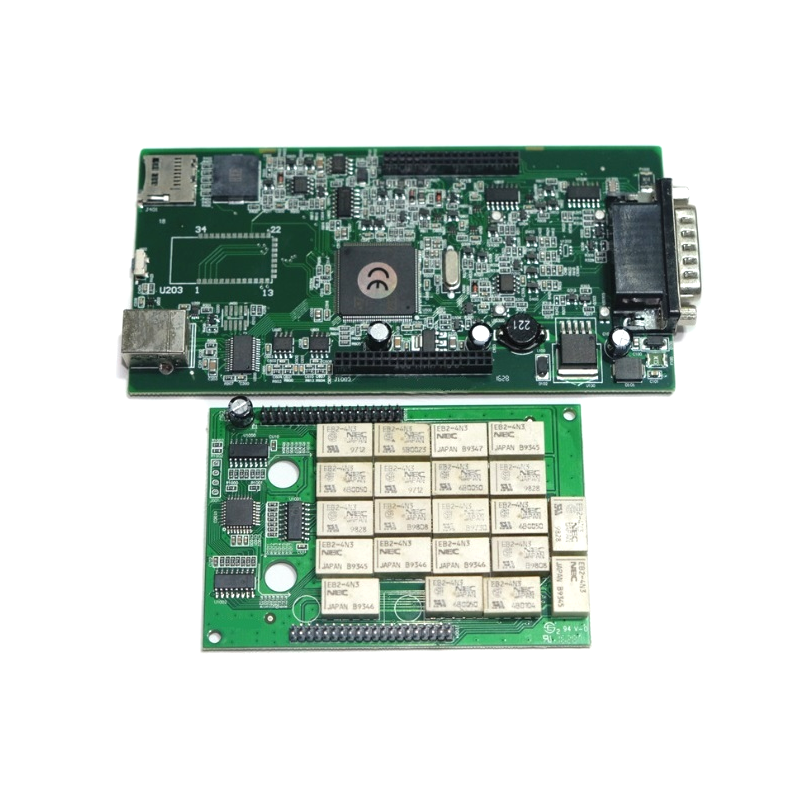Car OBD2 Communication Control Board
Details
A few things to note:
The OBD2 connector is near your steering wheel, but may be hidden behind covers/panels
Pin 16 supplies battery power (often while the ignition is off)
The OBD2 pinout depends on the communication protocol

The most common protocol is CAN (via ISO 15765), meaning that pins 6 (CAN-H) and 14 (CAN-L) will typically be connected
On board diagnostics, OBD2, is a 'higher layer protocol' (like a language). CAN is a method for communication (like a phone).
In particular, the OBD2 standard specifies the OBD2 connector, incl. a set of five protocols that it can run on (see below). Further, since 2008, CAN bus (ISO 15765) has been the mandatory protocol for OBD2 in all cars sold in the US.
ISO 15765 refers to a set of restrictions applied to the CAN standard (which is itself defined in ISO 11898). One might say that ISO 15765 is like "CAN for cars".
In particular, ISO 15765-4 describes the physical, data link layer and network layers, seeking to standardize the CAN bus interface for external test equipment. ISO 15765-2 in turn describes the transport layer (ISO TP) for sending CAN frames with payloads that exceed 8 bytes. This sub standard is also sometimes referred to as Diagnostic Communication over CAN (or DoCAN). See also the 7 layer OSI model illustration.
OBD2 can also be compared to other higher layer protocols (e.g. J1939, CANopen).







